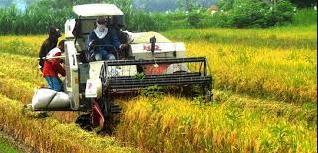
Energy and natural resources – the energy and mineral resources industry is one industry that plays a significant role in the development of the district. The prominent industries in the energy and mineral resources industry in Riau District consist of electrical power and mining.
Electrical power is an important product for human life currently. Without electric energy, it’s almost certain that many development industries will be paralyzed. Most of the electric energy in Riau District is still provided by the Specify Electrical power Company Energy and natural resources.
From 2013 to 2015, the electrical power capacity produced was 114 Kva/Kwh at PLTA, 94.6 Kva/Kwh at PLTD and 131.2 Kva/Kwh at PLTG. The quantity of electrical power capacity has neither enhanced neither reduced, neither has the variety of power producing units. In all Riau District, there are 1 unit of PLTA nuclear power plant, 65 units of PLTD nuclear power plant and 6 units of PLTG nuclear power plant.

farming
The agricultural industry is also among the factors that play a role in the development of the Riau economic climate. The main manufacturing of agricultural commodities are rice, corn and soybeans. Additionally, various other agricultural items that are green commodities in Riau District are peanuts, peanuts, cassava and wonderful potatoes.
Rice
In 2015, rice manufacturing in Riau reached 393,917 lots of dry milled grain (GKG). This manufacturing enhanced by 2.2 percent when compared with manufacturing in 2014. This increase was affected by the increase in the harvested location of 107,546 hectares, which enhanced by about 1,509 hectares (1.42%) compared with the previous year. Additionally, rice efficiency also enhanced by about 0.26 quintal/hectare or about 0.71
On the other hand
On the other hand, maize manufacturing enhanced by 30,870 lots of dry shelled, this manufacturing enhanced by about 7.75 percent or 2,219 lots of dry shelled. This can be affected by the increase in the location of corn manufacturing by 368 hectares (3.1%) compared with the 2014 manufacturing location of 12,057 hectares. There was also an increase in maize efficiency in 2015 of 1.09 quintals/hectare from 2014 or about 4.59%.
soybean
Soybean manufacturing also reduced in 2015 by 187 lots of dry beans (8.02%) from soybean manufacturing in 2014. This decrease in manufacturing was affected by the harvested location of 1,516 hectares, which reduced by about 514 hectares (25.32%). However, soybean efficiency enhanced by 2.66 quintals/hectare or 23.15% compared with the previous year.
peanut
In 2015, peanut manufacturing was less than in previous years. This manufacturing reduced by 8.39 percent compared with 2014 and 16.65 percent compared with 2013. This decrease in manufacturing was affected by the reducing location of peanut farming compared with 2013 and 2014 which were 18.41 percent and 9.23 percent specifically..